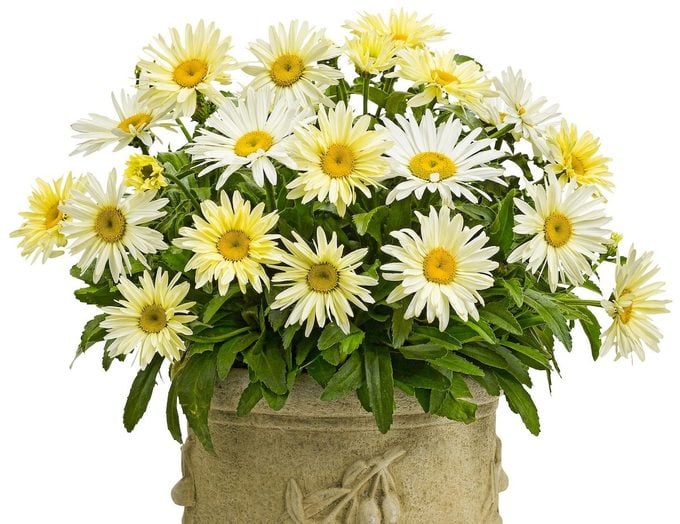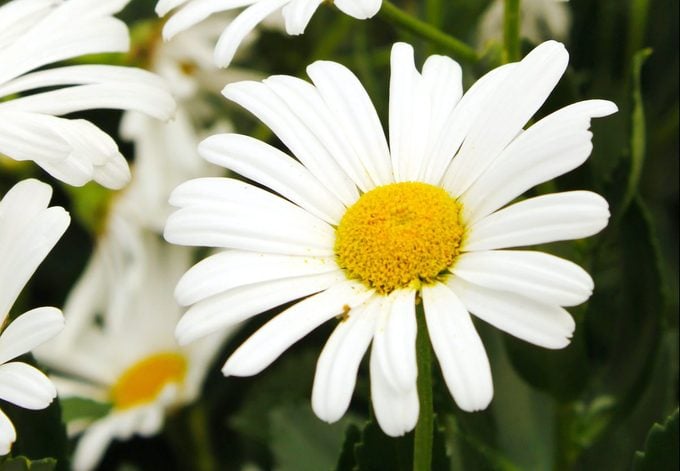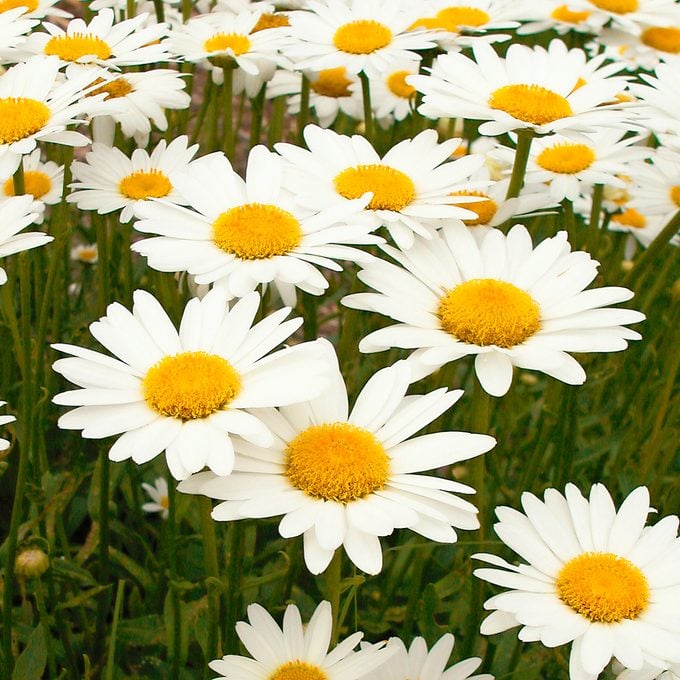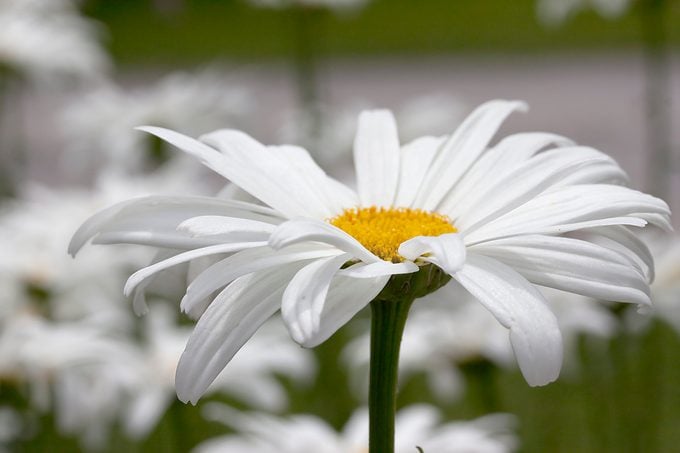How to Grow Shasta Daisies in Your Garden
Updated: Jun. 07, 2022
These classic, cheerful white blooms are a mainstay in the flower garden. Learn how to grow a Shasta daisy in your own backyard.
Our editors and experts handpick every product we feature. We may earn a commission from your purchases.

There’s something special about the colorful flower gardens that blossom across the Midwest when the weather warms. Perennials like coneflower, black-eyed susan, hosta, and tiger lilies are at their best in mid-summer. Shasta daisy adds a lovely cool splash of white to these colorful beds. If you’re not already growing these beautiful daisies, here’s what you need to know.
Learn how to grow Gerbera daisies in pots.
The History of Shasta Daisies

Shasta daisy doesn’t exist in the wild; it’s a hybrid of four other daisies from around the world created in the 1890s by Luther Burbank. Burbank was an American horticulturalist and agricultural pioneer who worked mainly in California. He introduced it to the world in 1901 after 17 years of development, naming it in honor of Mt. Shasta in the Cascade Mountains. His goal in hybridizing this variety was to create a daisy that resembled the wild ox-eye daisy he’d grown up loving in Massachusetts, with the added benefits of large flowers, sturdy stems, a prolonged blooming season and staying power when cut. Shasta daisy offers all those benefits and more!
Discover more interesting daisy facts you probably don’t know.
Shasta Daisy Care

- Botanical name: Leucanthum x Superbum
- Zones: 5 to 8
- Light needs: Full sun or part shade (in warmer climates)
- Soil: Well-draining
A perennial, this flower blooms the first year from seed. Its stems are sturdy enough to grow 3 to 4 feet tall without needing staking, and its clumping behavior means it’ll spread to fill your flower garden beds over time. It makes beautiful bouquets (as do these top 10 flowers for a cutting garden), and its bloom season lasts from mid-June to early fall in many areas.
Well-drained, fertile soil is best, so add organic material like compost around the Shasta daisy plants each spring to enrich the soil. Regular deadheading and division every two or three years stimulates growth. It tolerates dry spells well, but a little extra water in hot, dry weather may be needed. In the fall when blooms are done, cut foliage back to just above the soil. It will return in the spring to bloom anew!
Drought-tolerant blackfoot daisy can take the heat.
Becky Shasta Daisy

Popular varieties include the long blooming Becky Shasta daisy, known for attracting butterflies throughout the summer season and even into fall. Also beloved is Banana Cream, which features creamy yellow blooms that are long lasting in flower arrangements.
Psst—if you love daisies, don’t miss the April birth flower daisy gift guide.
